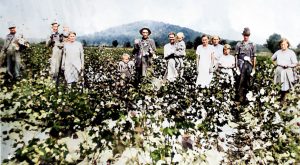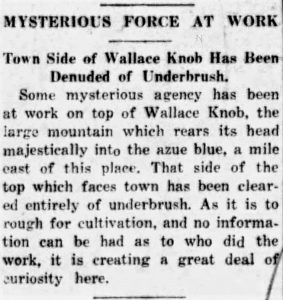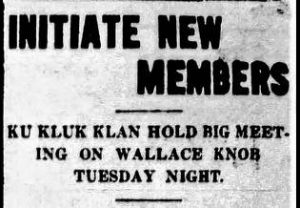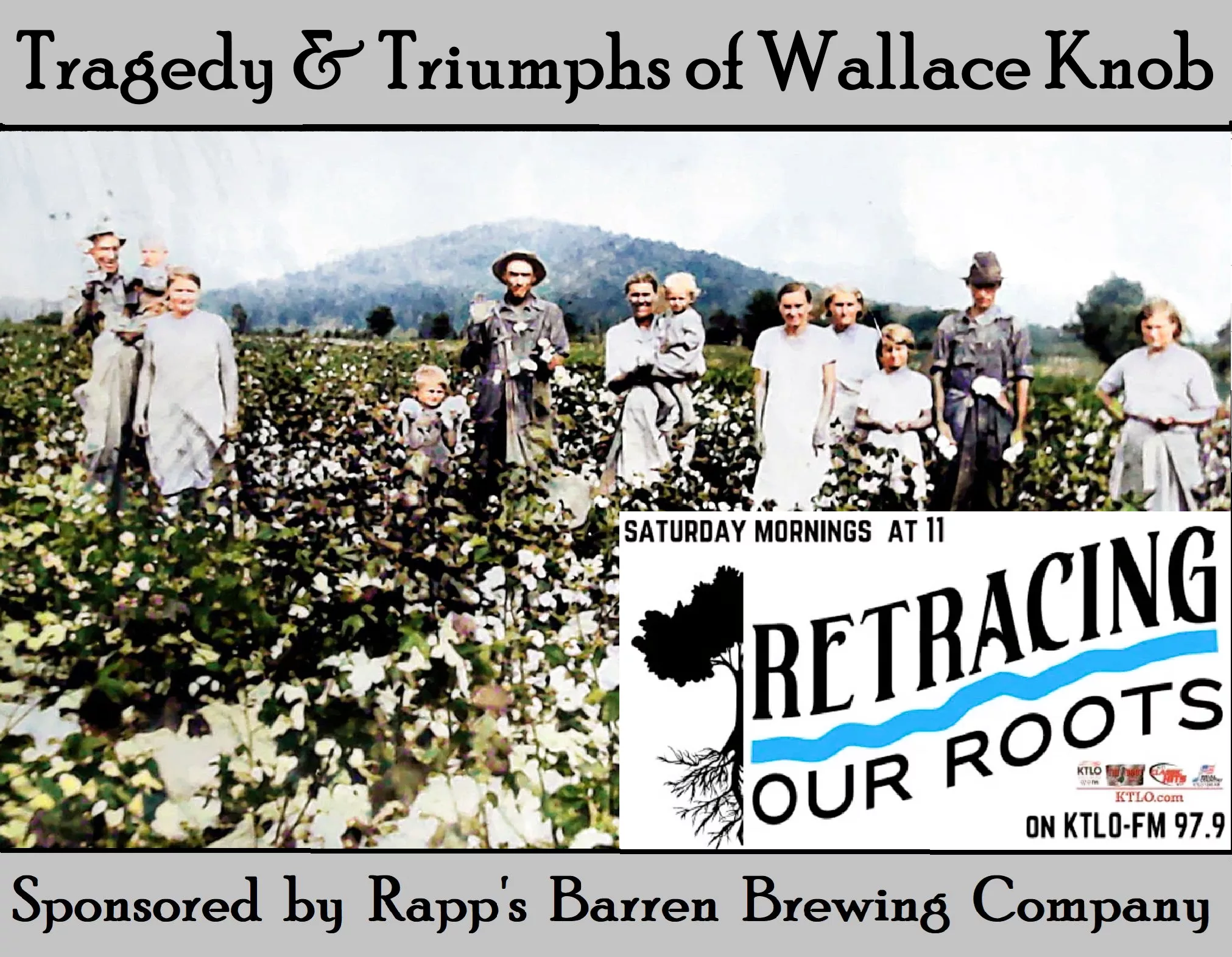ROR#33 Tragedy and Triumphs of Wallace Knob
Welcome to another fascinating episode of Retracing Our Roots. This week, Sammy Raycraft and Vincent Anderson explore one of the greatest features in Mountain Home, Arkansas.
In the first segment of our show, we begin answering questions from our listeners, and it’s always one of our favorite parts. Then, we’ll take a brief dive into the history of the Pigeon Creek area and the origin of its name, which traces back to the now-extinct passenger pigeon that once filled Ozark skies in the millions.
Then, we take a historical view into our weathered sentinel rising over Mountain Home, Arkansas. Wallace Knob is more than a bump on the landscape, it’s a rugged monument to the trials, triumphs, and oddball moments of Baxter County’s past. Named after Dr. J.H. Wallace, a dedicated local physician from the late 1800s, the knob has stood witness to generations of grit, grace, and a few good possum dinners.
By 1893, a mighty oak tree near the summit earned its stripes as a Signal Tree for the geographical and geological surveys. It stood proud, a kind of leafy GPS for the era, marking Wallace Knob as a place worth mapping.
In 1905, plans for electrical lines connecting Mountain Home and its sister city, Willow Springs, Missouri, showed that this wasn’t some forgotten outpost. Progress almost buzzed in the wires, yet it fell short when it came time to make it happen.
By 1906, the Talbert Brothers were hard at work, harvesting turkeys, persimmons, and cockleburs from the Knob to feed the Mountain Home Baptist College dormitory families. It wasn’t exactly gourmet, but it got the job done.
Then came 1907, when a mining claim was filed on the north side of Wallace Knob, the “Big Chunk” mining claim was registered. And that wasn’t just a local effort. At that time, Baxter County boasted at least 155 mines, with 20 out-of-state companies sniffing around for zinc, lead, and a shot at fortune.
Wallace Knob has had its scars. In 1909, fire scorched half the signal tree, but like any good Ozarker, it refused to give up. By Spring, new shoots rose defiantly, reminding us all that resilience can be rooted deep.
By 1912, geography classes were making treks to the summit to survey the land, taking in views that stretched north into Missouri. Meanwhile, in 1915, fire once again swept through Mountain Home and up the Knob, uniting neighbors to battle the blaze shoulder to shoulder to save their homes and farms.
In true Ozark fashion, the Knob provided both danger and dinner. In 1916, folks documented the harvest of 17 possums from its wooded slopes.
Come 1917, the north face of the Knob was paying out in zinc and lead, while in 1918, Baxter County boys serving in World War I wrote letters home saying they longed for two things: the sight of Wallace Knob and a pretty Baxter County girl.
In 1921, mock battles were staged by Professor Ward and the Mountain Home Baptist College cadets. Locals gathered at the base of the Knob to watch as students re-enacted wartime tactics, turning the hillside into a makeshift battlefield.
Then came 1922, a year that marred the Knob’s story. The Ku Klux Klan held a cross burning atop Wallace Knob, and the event was sadly reported in regional newspapers. It remains a dark moment in our community’s history. This is one story we must remember, not to glorify, but to ensure it never returns.
Despite this, the Knob endured. Fires returned, but so did the people, as they fought flames, saved farms, and rebuilt together. By 1936, Wallace Knob had been reclaimed for joy, with families picnicking with a scenic view. A year later, in 1937, the first Easter sunrise service was held at the summit. Although services are no longer active on the knob today, the tradition that still touches hearts today throughout the Ozarks.
By 1956, even the Brownie Scouts had made the climb, giggling and gossiping through their own mountaintop picnic.
In 1960, that tower brought the modern world to Mountain Home—black-and-white and color television came roaring in with five glorious channels: Springfield’s Channel 3 and 10, and Little Rock’s Channels 4, 7, and 11. Additionally in 1960, the REA placed a glowing nativity scene atop a newly erected 106-foot tower, lighting up the night sky during Christmas.
Today, many locals still gaze at Wallace Knob from afar, never making the climb. Wallace Knob has seen more than a few bruises. It’s been burned, blasted, pickaxed, and picnicked. But it stands still—like an old preacher with a hundred sermons tucked behind his eyes, waiting to speak when the winds are right.
So, if you ever find yourself longing for a little perspective, turn your gaze up toward Wallace Knob. Remember, Wallace Knob doesn’t just overlook the Twin Lakes region; it helps define who we were, who we are, and perhaps, if we listen closely, it may even inspire who we’re meant to become.
We’re truly thankful to Rapp’s Barren Brewing Company for their unwavering support of Retracing Our Roots. This is local programming at its best—where shared history brings folks together. And we couldn’t do it without the generosity of community-minded businesses like Rapp’s.
Next time you’re in Mountain Home, swing by Rapp’s Barren Brewing Company. Shake hands with Russell Tucker and his outstanding crew—and be sure to thank them for helping keep Ozarks’ history alive, one story (and one sip) at a time.
Sip. Savor. Sojourn. — Retracing Our Roots
Got a story you think we should dig into?
Shoot us a message—we’d love to hear from you.














